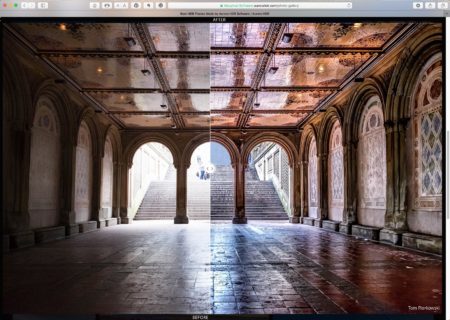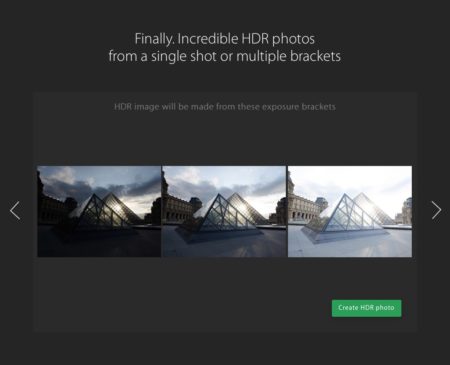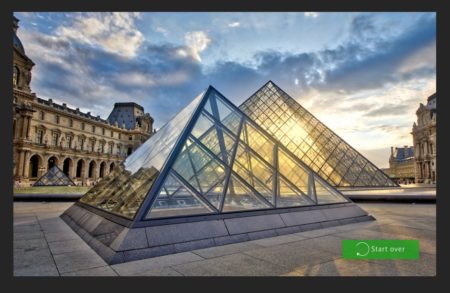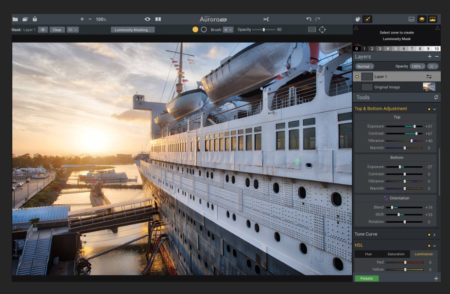Just about every architect loves to take the best possible photography of their own built work. However, great pictures don’t always come easy, and architectural photography is particularly demanding in the area of proper lighting where low-level lighting can hide the beautiful details that a design professional has spent so much time creating.
Enter Aurora and HDR
If you haven’t spent much time thinking about this subject in awhile you may not be familiar with high dynamic range (HDR) photography. While many architects are familiar with HDRI images used for environmental light sources in computerized renderings, HDR photography is the kissing sister of HDRI for rendering.
High dynamic range (HDR) is an imaging and photography technique whereby more luminosity is present (captured) in the image than what is normally possible in standard digital imaging or photography. And in fact, HDR emulates the experience the human visual system provides our brain, a system that adapts to a very broad range of luminance in any given environment in real time.

01 – This beautiful architectural shot isn’t done justice until Aurora HDR 2017 makes it better. The Mac-only software processes bracketed shots capturing more luminance data than standard low dynamic range (LDR) cameras produce in a single shot and combines that data for high dynamic range (HDR) imagery. Source: Aurora HDR 2017 website capture.
What the human visual system does in a very dark space, for example, is adapt to the shadows and pick up light that is there providing detail that cameras cannot. It does the same for very bright environments. Take the image above for example. Our eyes see the image on the right, cameras, at best, get the image on the left.
Aurora HDR 2017 is an application specifically designed to be utilized for HDR photography, doing what the human visual system does automatically for us in our pictures.
How It All Works
First, recognize that non-HDR cameras take photographs with a limited exposure range (LDR or limited dynamic range). To achieve HDR you take multiple exposure images of the same shot (one darker, one brighter than a target mid-range shot) and combine their exposure and luminosity data into one single image.

02 – An example process looks like this. Three images taken with any standard digital camera. Source: screenshot from Aurora HDR 2017 website.
To achieve an image like the one shown below (see image 03), a camera with an AEB (auto exposure bracketing) feature would be ideal but not necessary. You can still do the bracketing by hand taking one or two shots darker and lighter than average. (see image 02 above)

03 – From those three bracketed images, Aurora HDR 2017 can produce this image. Source: screenshot from Aurora HDR 2017 website.
Aurora HDR 2017 works by automatically merging bracketed shots. Take the example series from their website (above) of the glass pyramid at the Louvre. Aurora HDR 2017 works even if you don’t take bracketed shots, but clearly, it is better to have bracketed shots.
Working with Aperture, Lightroom, and Photoshop
The makers of Aurora says that Aurora HDR 2017 is the most complete HDR photo editing software on the market. It features a proprietary tone-mapping algorithm and comes with a full boat of editing features, pre-sets for image types, brushes and masking tools, Image Radiance controls, etc.. (see image 04)

04 – Aurora is one of those great Mac-only tools that will likely go Windows too because it’s just too good not to. Here is the user-interface. The app can also function as a plugin for Aperture, Lightroom, and Photoshop.
It can also work in conjunction with Apple’s Aperture and Adobe’s Lightroom and Photoshop—as a plugin to those apps. And in the future, it will work with Apple’s Photos app once that app allows the simultaneous opening of more than a single image.
Final Thoughts
This is a rather detailed introduction but is not a review of Aurora HDR 2017 by any means. A couple of final thoughts.
For those interested in making their own HDRI’s (high dynamic range images) for environmental lighting in computerized renderings, Aurora isn’t setup for that. One needs 360-degree spherical image stitching and other tools that this application does not have.
For architects, in particular, we hope this article makes it plainly obvious why a tool like Aurora HDR 2017 is something you should have in your arsenal. It may not help you (yet!) with your computerized imagery needs, but it will make your portfolio of finished buildings look amazing.
To learn more about Aurora HDR 2017 visit them here.



Reader Comments
[…] Source link […]
Comments are closed.